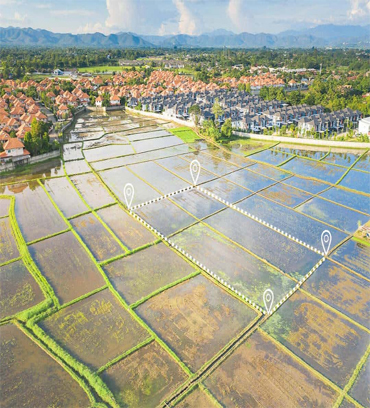LAND DEVELOPMENT
Introduction to the concept of land development and its importance in shaping communities and
economies.
Overview of the land development process and the key stages involved in transforming raw
land into valuable assets.
- Pre-Development :
Site selection and acquisition, considering factors such as location, zoning
regulations, access to utilities, and market demand.
Feasibility studies and due diligence, assessing the physical, environmental, and
regulatory constraints of the site.
Land use planning and design, envisioning the desired development outcomes and creating
a master plan that maximizes the land's potential.
- Regulatory Approvals and Permitting:
Navigating the regulatory landscape, obtaining necessary permits, approvals, and
entitlements from local authorities and government agencies.
Environmental impact assessments and mitigation strategies to address potential
environmental concerns and comply with regulations.
Community engagement and stakeholder consultation to gather input, address concerns, and
build support for the proposed development.
- Infrastructure Development:
Planning and construction of essential infrastructure, including roads, utilities
(water, sewer, electricity, gas), drainage systems, and telecommunications.
Coordination with utility providers, public works departments, and other stakeholders to
ensure seamless integration and efficient delivery of services.
Incorporation of sustainable design principles, such as green infrastructure and water
conservation measures, to enhance environmental resilience and efficiency.
- Subdivision and Land Parcelling:
Subdivision layout and design, dividing the land into lots or parcels for residential,
commercial, or mixed-use development.
Establishment of legal boundaries, easements, and common areas to facilitate property
ownership and management.
Compliance with subdivision regulations and platting requirements, including lot size,
setbacks, and street layouts.
- Site Development and Construction:
Grading and earthwork operations to prepare the site for development, optimizing land
contours and drainage patterns.
Construction of site improvements, such as streets, sidewalks, curbs, gutters, and
landscaping.
Building construction and infrastructure installation, including residential,
commercial, or industrial structures and amenities.
- Post-Development :
Inspections and certifications to verify the completion and compliance of the
development with regulatory requirements.
Marketing and sales efforts to attract buyers or tenants and maximize the return on
investment.
Property management and ongoing maintenance to preserve the value and functionality of
the developed land and infrastructure.



